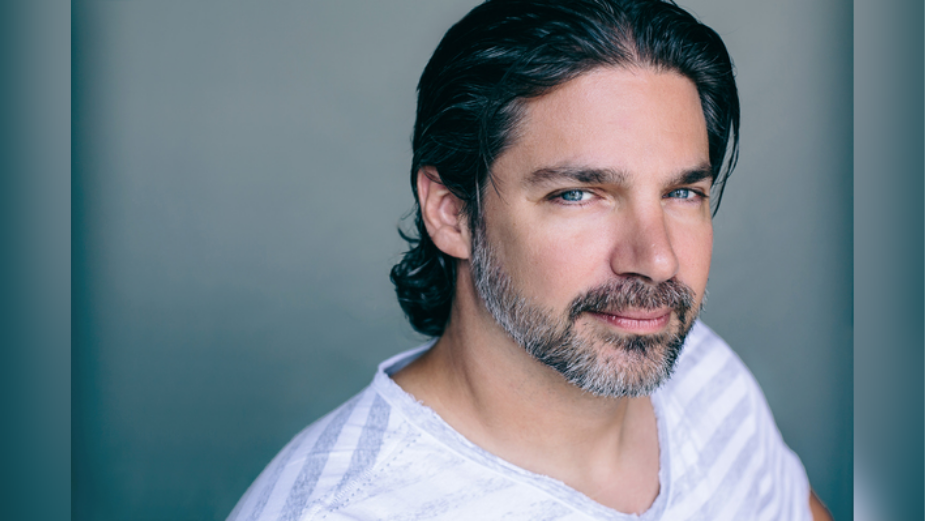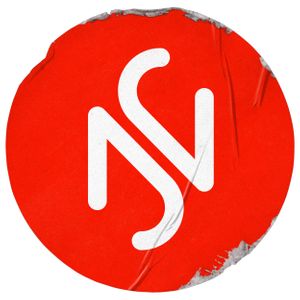
Making the Grade: Lenny Mastrandrea

Nice Shoes' Lenny Mastrandrea always encourages his collaborators to embrace the possibilities of colour, pushing content to find a unique look that helps a story, and ultimately a brand stand out. Lenny loves acting as a source of knowledge for his colleagues and partners, always ready to share his experience in colour grading to help others grow their careers.
Lenny has been obsessed with construction. It began with building with his father, a general contractor, and continued as he studied how to craft a story while studying to be an English teacher in college (don’t use incorrect grammar in your session - he’ll get you!). That passion grew as Lenny found his way into advertising and ultimately colour, as Lenny has studied and experimented with how colour impacts the construction of a story.
LBB> What was your first experience with the world of colour grading – and when did you decide that being a colourist was a role that you wanted to pursue?
Lenny> My first exposure was as a colour assistant working the night shift, assisting two dailies colourists, who had contrasting styles (and personalities). Early in my career, I didn’t really understand the contribution that colour could have to the final product. It seemed rudimentary and more about balancing the image. The goal seemed to be to make it all match and make it natural, but not really about exploring a creative approach. Each of the colourists had their own approach to accomplishing this task. As I was learning on the job, I was warned not to use the other’s methodology. So I guess the first lesson was that I needed to pick and choose what to take away from each artist and discern my own way of doing things as I progressed.
There came a point where I got an opportunity to meet with colourist Scott Burch (one of the Nice Shoes co-founders), who was at SMA at the time. SMA could only match my current salary, but Scott offered to teach me everything he knew, so I jumped at the chance. Despite how busy our schedules were, he was true to his word and took the time to ask me and teach what I wanted to learn. As his apprentice, I was exposed to creativity and that was the turning point. He taught me so much from an artistic perspective, as well as how to manage a suite full of clients and have them all depart feeling both happy and respected. The latter two were things I hadn’t considered, but truly were invaluable skills to any colourist. Simply getting the job done is never enough to make a lasting impression.
LBB> What was the project that you felt really changed your career?
Lenny> Under Armour. I was the first colourist to work on their commercials. The founder of Under Armour came in to work with me along with his production team. The relationship went on for years. I was helping to establish what was to evolve into a major brand. That was one of my first truly solid relationships with a client, which I recognised as a tremendous accomplishment. Learning to become a colourist takes years of time and effort, but once you learn how to develop a rapport with someone, they become more than simply a client. I realised that these bonds you establish can be a huge part of your success.
LBB> Tell us more about your creative process
Lenny> Upon viewing content for the first time, I look to see what draws my attention. I attempt to ascertain what the team is trying to say. Once I feel that I have a handle on their perspective, I start to map out my approach, which depends on the client and often, the content. If Director/DP notes have been provided, I will incorporate those notes into my approach. My urge is often to want to push past creatives’ comfort zone, so if I think the opportunity exists, I will. Before they arrive for a session, I'll have created a few distinct looks for a few hero shots. Wides and closeups perhaps for each environment.
Then begins the real collaboration. More insight is provided from all relevant parties and we work to bring all points of view together. They might lean more towards what I have presented, or we could go somewhere completely different.
I’ve been doing a series on Instagram called 'Color Is Subjective' where I’ve been going back and trying out looks on some previous projects in an effort to inspire others. Truly it should be called, “Think outside the box” but that term is overused. I’ve gotten a lot of great feedback from clients about what it’s opened up for them.
But ultimately much of it is advertising. There can be many people calling the shots. You want to be creative but also want to make sure you’re working within a brand’s guidelines so that everyone’s hard work is well received by all.
I think that we’re leaning more towards stylistic approaches now in the US. This has been going on around the world for a while - Cinematic, stylish work has been coming out of Europe and South America for a few years. It seems domestic advertising is becoming more willing to push visual boundaries with cinematography and colour.
LBB> From experience, we’ve found that colourists often love art and photography - when you’re out of the studio, what inspires you?
Lenny> I’m inspired by the work of others. My Instagram feed is almost entirely made up of directors, DPS, and other colourists. I would question any colourists who claim they take no inspiration from the work of others in the same field. If I see an interesting approach I’ll immediately consider how that might be adapted and applied to some future project.
But mainly it’s feature films that inspire me. Ones that go outside of the norm. Joker was absolutely brilliant. Jill Bogdanowicz is a genius when it comes to colour. Her approach was fresh and inspiring. She enhanced the message of the story, which is the fundamental focus of a colourist. It’s almost got a sickly feel to it which adds to the story of a person whose mind is slowly losing touch with reality. Without her grade, the film would not have been nearly as powerful. It’s incredibly inspiring when colour plays such a key role.
As a director, I enjoy Zack Snyder’s approach to colour. Far from common fare, every film has a mood. They’re epic. You see the value he places on the colour grading process as a storytelling device in his films.
LBB> Colour grading is largely a digital affair, but there’s also been a resurgence of film over the past few years in commercials and music videos. What are your thoughts about working on film versus digital formats like 4K? And what are your favourite techniques for capturing a vintage or tactile feel?
Lenny> As it is the more costly approach, it rarely crosses my path in recent years. The inherent grain and emulsion captured on film has a very organic feel to it. But in this modern era, there is often an aversion to those same traits. A large portion of consumers are simply used to clean and polished imagery. When called for, imitating grain is relatively simple these days and is often incorporated into a look, doing the same with regards to emulsion is a much more complex task.
LBB> When working in commercials, what role can colour and a grade play in enhancing a brand’s assets and what sort of conversations do you have with creatives and clients about that (e.g. is there often a strategic/consistent ‘look’ for a brand? Can these be too heavy handed?)
Lenny> The role colour plays is often affected by the strategy of the creative team. What are we marketing and to whom? Both factors will greatly impact the direction of the campaign. A colourist’s role is to aid in generating that look and to carry it forward throughout the length of the campaign. Often this determines the look across all media outlets.
LBB> How do you ensure that each colourist-director partnership is a success?
Lenny> Ideally, I always want to try to be in touch with a director and/or DP on a project. They’re not always available to attend a session, and ultimately the decision is really in the agency’s hands. But I want to know what they envisioned. I will then do my best to incorporate those notes into the final outcome. The extra effort relays the respect an artist has for their contribution and goes towards building a lasting relationship.
LBB> What advice would you give to budding colourist?
Lenny> Learn your basics on your own, through a course or research. If you can, then seek out mentors. They can aid in comprehension of why we make the decisions we do. Start thinking about how to add your own sense of style to it.
Communication. Whatever you can do to learn how to better communicate and manage conversations. Through this, a client can be inspired by what was accomplished. Even in the past year of working fully remotely, building and maintaining relationships never took a back seat.
Contribute! I have heard horror stories of colourists who opened the session with “What do you want me to do?” What would you say to a mechanic who offered to fix your car or improve on its performance? Your value is in your artistry, so don’t be afraid to express your own ideas. Don’t just turn the knobs. Be creative. Be an artist. Look to your peers, and discuss other styles and approaches. When Maria (Carretero) joined, I loved hearing how she did things, and how she thought about things a bit differently.
LBB> In your opinion, what’s the difference between a good grade and a great grade?
Lenny> A good grade is a perfect balance of the image. Shots match. Nothing feels disconnected.
A great grade is when you’ve added something to it, and it’s got style. It stands out in the flood of media we are bombarded with every day.
LBB> How is the craft and trade of colour grading changing?
Lenny> As the software has become accessible to all and opens up ideas. The profession used to be limited to a small number of colourists, and an even smaller number who were outstanding. With such a large number of contributors targeting so many different platforms, ingenuity is attainable by all who so desire. Global access to results urges artists to think differently than they had before.













